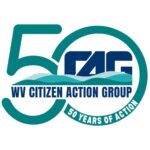- Like
- Digg
- Del
- Tumblr
- VKontakte
- Buffer
- Love This
- Odnoklassniki
- Meneame
- Blogger
- Amazon
- Yahoo Mail
- Gmail
- AOL
- Newsvine
- HackerNews
- Evernote
- MySpace
- Mail.ru
- Viadeo
- Line
- Comments
- Yummly
- SMS
- Viber
- Telegram
- Subscribe
- Skype
- Facebook Messenger
- Kakao
- LiveJournal
- Yammer
- Edgar
- Fintel
- Mix
- Instapaper
- Copy Link

November 12, 2014
Water Docket
U.S. Environmental Protection Agency
Mail Code 2822T
1200 Pennsylvania Ave., NW
Washington, DC 20460
RE: SUPPORT Docket No. EPA-HQ-OW- 2011-0880
As West Virginia organizations who seek protection of our state’s water resources, we believe that clean local streams and rivers are the foundation for strong communities, a vibrant economy, and a healthy population. Although we are a diverse community of interests, we all strongly support the proposed “Waters of the United States” rule.
We are particularly concerned with protections for headwater streams, including intermittent and rain dependent streams. West Virginia is the headwaters for two of America’s great rivers, the Ohio and the Potomac. Together these rivers provide drinking water, as well as water for business and recreation, to millions of Americans. Because these headwaters are the originating source water for so many states and their people, there is a federal role to protecting these headwaters and an urgent need for clarity.
Over half of West Virginia’s 1.8 million residents rely on public water systems for their drinking water that originates in part in intermittent, ephemeral or headwater streams. These are the very types of streams which have been the subject of unnecessary litigation and uncertainty, arising from Supreme Court decisions and subsequent agency guidance that have caused confusion in implementing the Clean Water Act in West Virginia.
This regulatory confusion has hampered the ability of West Virginia to uphold Clean Water Act protections with regard to administering the disposition of mining waste into headwater streams, water withdrawals in the natural gas industry, and waste management in concentrated animal feeding operations.
The proposed rule will clarify the Clean Water Act’s jurisdiction, reduce uncertainty, and protect drinking water for millions of Americans whose source water originates in the West Virginia headwaters—including those who reside in West Virginia. For these and the following reasons, we strongly support the proposed rulemaking.
A. The Proposed Rule Is Supported By Legislative History.
When passing the Clean Water Act in 1972, Congress made it clear that the scope of the Clean Water Act was to be far-reaching. The Act’s ambitious goal—“to restore and maintain the chemical, physical and biological integrity of the Nation’s water”1—required extensive federal authority over the “Nation’s waters.” The record of Congress’ deliberation demonstrates that that Congress intended the Clean Water Act “be given the broadest possible constitutional interpretation unencumbered by agency determinations which have been made or may be made for administrative purposes.”2 Congress recognized that “water moves in hydrologic cycles and it is essential that discharge of pollutants be controlled at the source.”3 Given Congress’ clear intent that the Clean Water Act address pollution at its source and its recognition that waters are interconnected, the scope of the proposed rule is well within Congressional intent and is legal.4
The U.S. Environmental Protection Agency and the U.S. Army Corps of Engineers are entitled to deference in decisions about the scope of Clean Water Act authority based on their expert ecological judgment about the role that certain kinds of waters play in the aquatic system,5 unless a particular interpretation “invokes the outer limits of Congress’ power.”6 Where, as here, the proposed rule is based on copious scientific evidence and the agencies’ judgment about whether the science reveals a “significant nexus” between various categories of waters and downstream navigable or interstate waters, the approach is a reasonable and lawful interpretation of the Clean Water Act.
B. The Proposed Rule Will Protect Sensitive Waters Beyond West Virginia.
One of the most important aspects of the proposed rule is its protection of intermittent and ephemeral streams. Protection of these sensitive headwaters is critical to safeguarding water quality and wildlife. Take, for example, the Chesapeake Bay watershed which receives waters from six states and the District of Columbia. Because eight counties (plus portions of two others) of West Virginia drain to the Bay, the state is a signatory of the multi-state Chesapeake Bay Agreement.
The Chesapeake Bay watershed has 147,149 miles of rivers and streams. Thirty eight percent, or 56,689 of those miles, are intermittent or ephemeral streams that would be protected by the proposed rule.
C. The Rule Is Supported By Science.
The Supreme Court opined that the EPA and Army Corps of Engineers must demonstrate a significant nexus between, among others, headwaters and downstream waters. EPA’s assessment, titled Connectivity of Streams and Wetlands to Downstream Waters, presents a review and synthesis of more than 1,000 pieces of scientific literature. This assessment was reviewed by the independent Science Advisory Board, or SAB.
In its report to EPA, the SAB “finds that the review and synthesis of the literature describing connectivity of streams to downstream waters reflects the pertinent literature and is well grounded in current science. The literature review provides strong scientific support for the conclusion that ephemeral, intermittent, and perennial streams exert a strong influence on the character and functioning of downstream waters and that tributary streams are connected to downstream waters.”
This review of more than 1,000 pieces of scientific literature presents hard evidence that providing drinking water to millions of Americans in the Potomac and Ohio watersheds depends in part on healthy headwaters in West Virginia. It further demonstrates the urgent call to protect these headwaters for the drinking water of more than one million West Virginians.
Conclusion
We strongly urge the U.S. Environmental Protection Agency and the U.S. Army Corps of Engineers to ensure that ephemeral, intermittent, and perennial streams are protected under the Clean Water Act by adopting the proposed rule.
PDF BELOW:
Read more about how WV CAG support a healthy environment in our work here.













